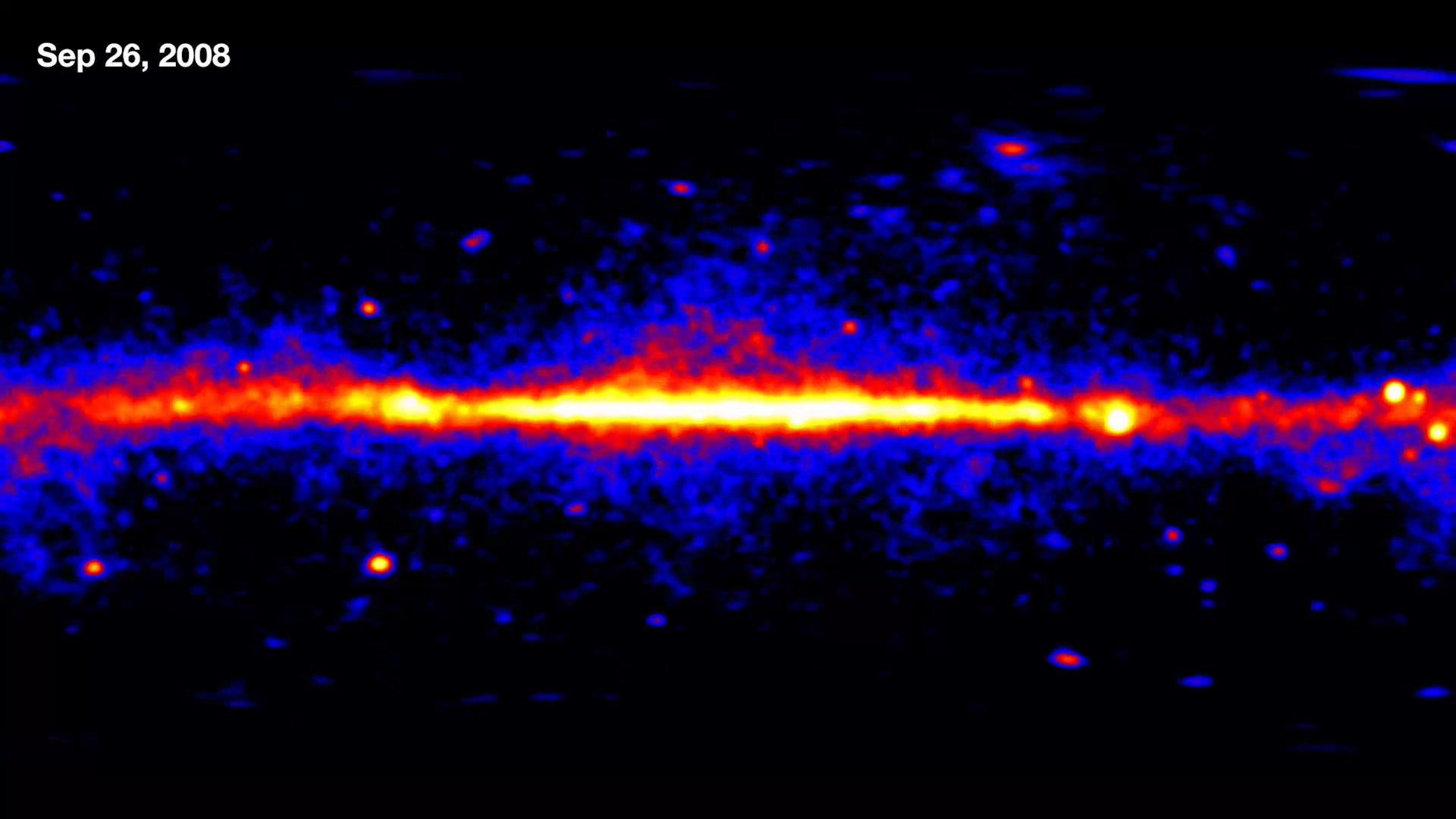The Fermi Gamma-ray Space Telescope, named in honor of noted physicist Enrico Fermi, has been in operation for almost a decade and a half, monitoring the cosmos for gamma rays. As the highest-energy form of light, these rays are produced by extremely energetic phenomena – like supernovae, neutron stars, quasars, and gamma-ray bursts (GRBs). In honor of this observatory’s long history, NASA’s Goddard Spaceflight Center has released a time-lapse movie that shows data acquired by the Fermi Space Telescope between August 2008 and August 2022.
The movie shows gamma rays with energies above 200 million electron volts (MeV), where brighter colors indicate more intense gamma-ray sources detected by Fermi’s Large Area Telescope (LAT) during its 14-year run. The movie also shows the gamma-ray sky from two perspectives. First, there’s the rectangular view that shows a full-sky view with the central plane of the Milky Way Galaxy in the center. The disk glows predominantly from gamma rays produced by cosmic rays striking interstellar gas and starlight.
Other tiny light sources indicate the presence of neutron stars and supernova remnants, with cosmic sources peppered about the cosmic background. The second perspective shows what the gamma-ray sky looks like when Fermi is oriented towards Galactic North and South (or “up” and “down” relative to the galactic disk). This perspective allows astronomers to view gamma-ray sources in the extra-galactic sky, including distant galaxies with active nuclei (aka. quasars). The central plane of our galaxy wraps around the edges of both circles, where its brightness is suppressed, and our view of active galaxies in the distant Universe is improved.
The Sun can occasionally be seen passing into view and flaring against the background of high-energy sources within our galaxy and beyond. The brightest extra-galactic sources are blazars, or galaxies that host central black holes of a million Solar masses or more. These supermassive black holes (SMBH), as they’re called, produce jets of superheated material that travel at a fraction of the speed of light (aka. relativistic jets). For some blazars, Fermi could look almost directly down some of these jets, enhancing their brightness and variability.
When these galaxies flare, their central regions temporarily outshine all the stars in their disk. These flare-ups also cause them to temporarily become the brightest objects in the gamma-ray sky, then fade to obscurity. Many of these galaxies are billions of light-years away, meaning that flare-ups occurred when Earth and the Solar System were still young (or didn’t even exist yet!) Not seen in the time-lapse are many short-duration events, such as gamma-ray bursts, resulting from data processing designed to sharpen the images.
This is not the only big news item for the Fermi mission. On November 27th, the mission team released a new catalog – “The Third Fermi Large Area Telescope Catalog of Gamma-Ray Pulsars” – which contains the more than 300 pulsars discovered by the Fermi mission since 2008. Be sure to check out NASA’s Science Visualization Studio to learn more about the Fermi animation and the work that went into creating it.
Further Reading: NASA SVS

